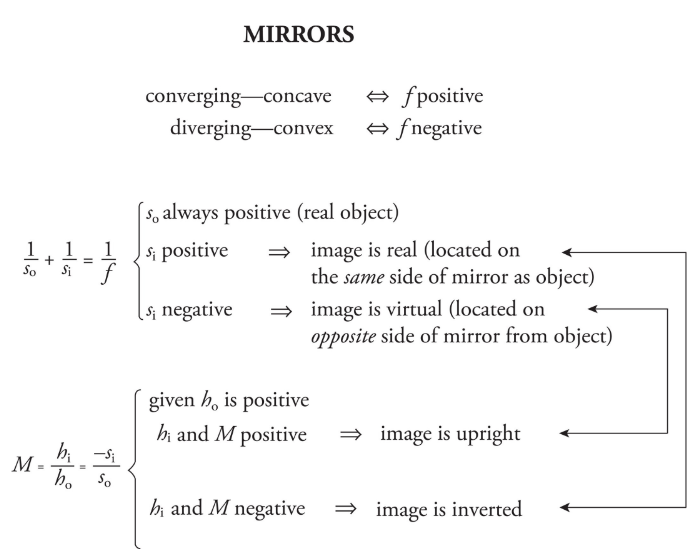Unit 6: Geometric and Physical Optics
1/34
Earn XP
Name | Mastery | Learn | Test | Matching | Spaced |
|---|
No study sessions yet.
35 Terms
Electromagnetic waves
Electromagnetic waves are a type of wave that consists of oscillating electric and magnetic fields that travel through space at the speed of light.They are produced by the acceleration of charged particles and include radio waves, microwaves, infrared radiation, visible light, ultraviolet radiation, X-rays, and gamma rays.Electromagnetic waves have a wide range of applications, including communication, medical imaging, and energy production.
Electromagnetic Spectrum
It can be categorized by its frequency. The full range of waves is called the electromagnetic spectrum.
Interference
The phenomenon of superimposition of two or more waves having the same frequency emitted by two coherent sources.
Diffraction
It is defined as the interference or bending of waves around the corners of an obstacle or through an aperture into the region of the geometrical shadow of the obstacle/aperture.
Single-Slit Experiment
A diffraction pattern will also form on the screen if the barrier contains only one slit.
Young’s Double Slit Experiment
The incident light on a barrier that contains two narrow slits, separated by distance d. On the right there is a screen whose distance from barrier L, is much greater than d.

Constructive and Destructive Interference
constructive interference: d sinθ = m λ
destructive interference: d sinθ = (m+1/2) λ
where, m = 0, 1, 2, 3, etc.
λ = wavelength of light
d = distance
Angle of incidence
The angle that the incident beam makes with the normal is called the angle of incidence.
Angle of reflection
The angle that the reflection makes with the normal is called the angle of reflection.
Angle of refraction
The angle that the transmitted beam makes with the normal is called the angle of refraction.
Laws of reflection
The incident, reflection, and transmitted beams of light all lie in the same plane.
The relationship between the incident and reflected ray:
angle of incidence = angle of reflection
Maximum index of refraction
n = c/v
c = speed of light (3*10^8 m/s)
v = speed of light in a particular medium
n = refractive index
Snell’s Law
n 1 sin θ′1 = n2 sin θ′2 If n2>n1, the beam will bend/refract toward the normal.
If n2<n1, the beam will bend away from the normal.
Here, n1 and n2 are the refractive indexes in respective mediums.
Total internal reflection
Total internal reflection occurs when:
n1> n2 and θ1> θc, where, θc = sin−1 (n2/n1)
θc is the critical angle.
n1 and n2 are the refractive indexes in respective mediums.
Mirror
A mirror is an optical device that forms an image by reflecting light.
Plane mirror
Our image is behind the mirror and stands at an equal distance as we stand before the mirror.
An image is said to be real if light rays actually focus on the image.
A real image can be projected onto the screen.
The images produced by the flat mirror are virtual.
In a flat mirror, we see an upright image because it's virtual.
In real images, the image is upside down.
The image formed by plane mirrors is neither diminished nor enlarged.
Spherical mirror
A spherical mirror is a mirror that’s curved in such a way that its surface forms part of a sphere.
Relationship between focal length and center of curvature
F = R/2 where,
F = focal length (the focal length of an optical system is a measure of how strongly the system converges or diverges light).
R = radius of curvature (the radius of curvature is the radius of a hollow sphere of which the mirror/spherical mirror is a part).
Concave mirror
A mirror whose reflective side is caved in toward the center of curvature.
Convex mirror
A mirror whose reflective side curving away from the center of curvature.
Mirror equation
1/so + 1/si =1/ f
so = object distance
si = image distance
f = focal length
Magnification equation
M = hi/ho = -si/so
M = magnification
hi = height of the image
ho = height of the object
si = image distance
so = object distance
conclusion on mirrors

Converging lens
Bi-convex lens
Diverging lens
Bi-concave lens
Power of Lens
P = 1/f
P = power of the lens
f = focal length of lens
light
Light is a form of energy that travels in a straight line when in one medium (material).The speed of light is 3x108m/9c m/s (or 300,000,000 m/s)
Visible Spectrum
The continues of colors that make up with light.
Geometric optics
Using light rays to determine how light behaves when it strikes an object.
light ray
is a line and arrow representing the direction and straight-line path of light.
Real Image
An image which light actually comes from the image
Virtual image
an image which light does not arrive at or actually come from the image location, light only appears to come from the image
Centre of curvature
The centre of the sphere whose surface was used to make an image
Principal axis
This is a line through the centre of curvature which runs through midpoint of mirror.
Focus
Focus is the point at which lights rays parallel to principal axis converge when reflected.